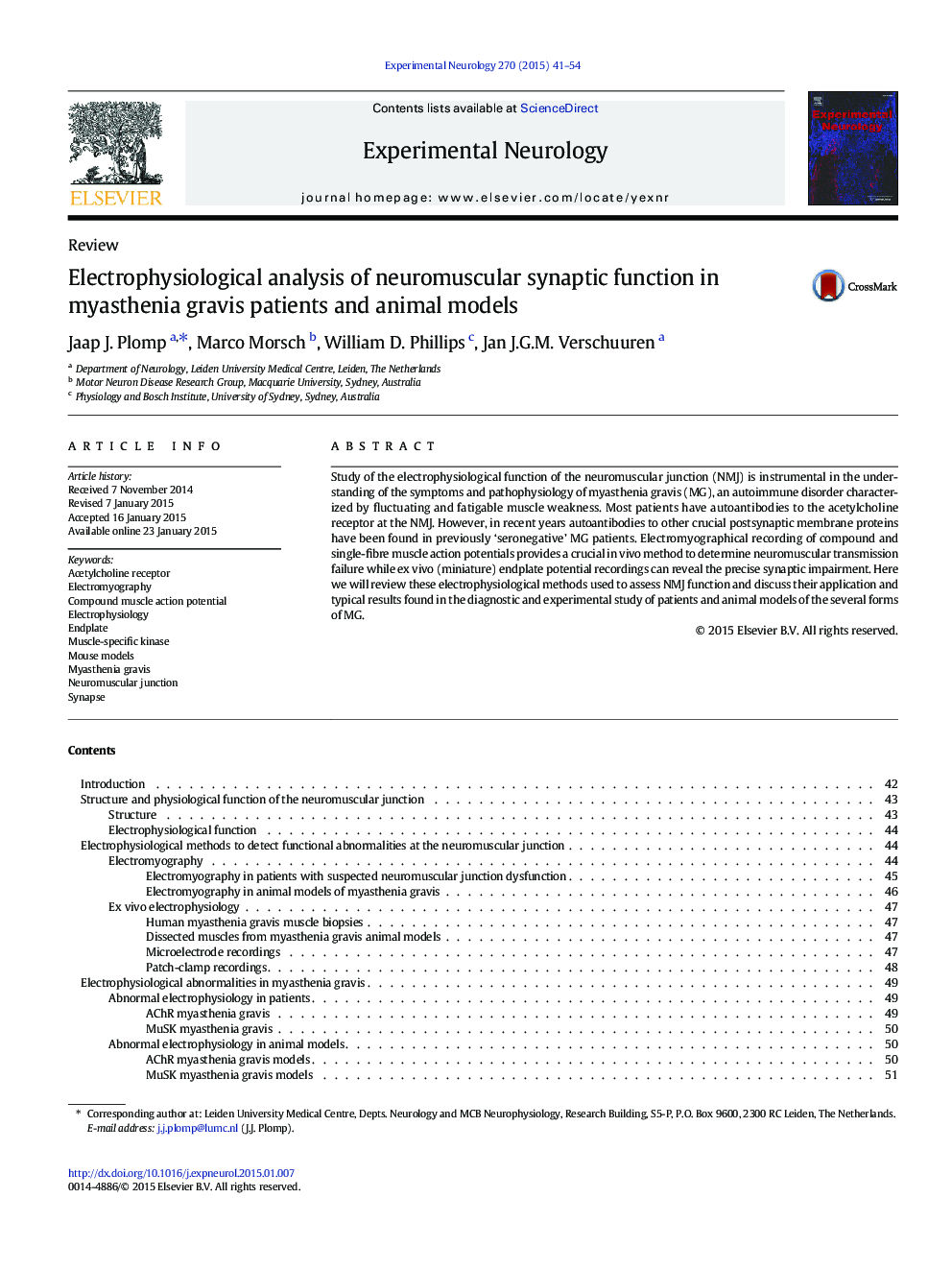| Article ID | Journal | Published Year | Pages | File Type |
|---|---|---|---|---|
| 6017412 | Experimental Neurology | 2015 | 14 Pages |
â¢Electrophysiological methods allow detailed study of neuromuscular synapse function.â¢Functional characterisation is crucial to understand the pathophysiology of myasthenia.â¢Electrophysiological assessment of experimental drug effects in models is clinically relevant.â¢This paper aims to provide guidance for electrophysiological study of myasthenic neuromuscular synapses.
Study of the electrophysiological function of the neuromuscular junction (NMJ) is instrumental in the understanding of the symptoms and pathophysiology of myasthenia gravis (MG), an autoimmune disorder characterized by fluctuating and fatigable muscle weakness. Most patients have autoantibodies to the acetylcholine receptor at the NMJ. However, in recent years autoantibodies to other crucial postsynaptic membrane proteins have been found in previously 'seronegative' MG patients. Electromyographical recording of compound and single-fibre muscle action potentials provides a crucial in vivo method to determine neuromuscular transmission failure while ex vivo (miniature) endplate potential recordings can reveal the precise synaptic impairment. Here we will review these electrophysiological methods used to assess NMJ function and discuss their application and typical results found in the diagnostic and experimental study of patients and animal models of the several forms of MG.
